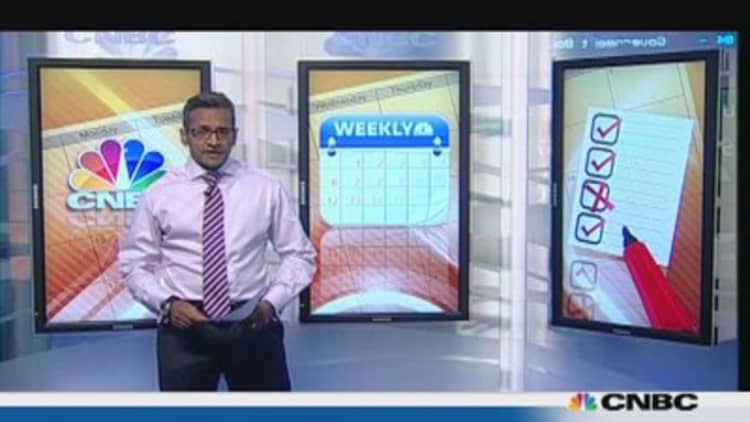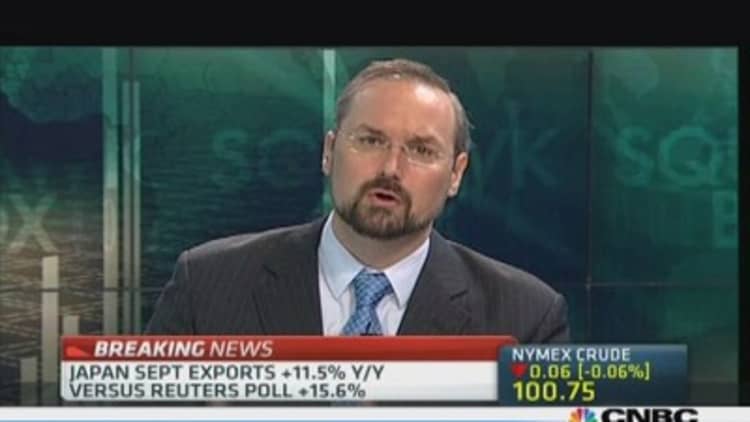While the rally in U.S. dollar-yen has fizzled out over the past five months, foreign exchange strategists say the trade is not over yet.
"I think dollar weakness will keep dollar-yen range bound in the short-term, but the bias for longer-term is for it to head higher. The economy needs a weaker currency as it adjusts to the sales tax hike [in April]," Nizam Idris, head of strategy, Fixed Income and Currencies at Macquarie told CNBC. He forecasts the pair will hit 105 in the next six months.
Since hitting a 4-1/2-year low of 103.73 in late-May, the yen has appreciated around 5.5 percent against the greenback to trade around the 97.95 level on Japan's slowing reform momentum and the Federal Reserve turning more dovish.
The central bank is expected to postpone plans to wind down its $85 billion-a-month asset-purchase program to 2014 following the 16-day partial government shutdown, which resulted in a delay in the release of economic data and thousands of federal workers being furloughed.
(Read more: Aftermath of USshutdown continues to jolt dollar)

In the recent weeks, strength in the Japanese currency has also been driven by demand for safe haven assets amid concerns over the U.S. fiscal impasse.
There are two main factors that could trigger renewed weakness in the yen in the coming months: verbal intervention or additional monetary stimulus by the Bank of Japan (BOJ) to offset any drag from the sales tax hike, said Idris.
(Read more: Weak yen not enough to boost Japanese exports)
"As we head into the first quarter of 2014, there's a risk the BOJ could talk the currency down; it could also embark on open-ended quantitative easing. Currently they are buying $70 billion worth of JGBs a month, they could do more," he said.
Mitul Kotecha, head of global currency research, Credit Agricole, who agrees further yen weakness is on the cards, says a sustained fall in the currency requires continued improvement in investor risk appetite and higher U.S. government bond yields.
(Read more: Here's what may trigger BOJ stimulus)
"U.S. bond yields have been slipping because markets are paring back expectations of U.S. tapering. What you would need to see is U.S. yields move higher again," said Kotecha.

Ten-year Treasury yields have fallen below 2.6 percent from near 3 percent at the beginning of September on expectations that the Fed will delay tapering until 2014. However, they remain significantly higher than 10-year Japanese government bond yields which stand at 0.63 percent.
Simon Grose-Hodge, head of investment advisory at LGT Bank says it's just a matter of time before U.S. government bond yields start to move higher again.
(Read more: What happened to a weak yen?)
"There's no question that yen weakness has been delayed, by the delay in Fed tapering. There's a strong correlation between dollar-yen and the Treasury yield. However once tapering starts, and it may not happen until next year, that's going to have an overriding influence. Dollar-yen will slowly and gradually move higher," he said.
U.S. investment bank Goldman Sachs, which sees the yen trading at 103 against the greenback six months from now, and at 125 in 2016, says interest rate differentials warrant a bullish view on U.S. dollar-yen over the longer run.
—By CNBC's Ansuya Harjani; Follow her on Twitter:@Ansuya_H


